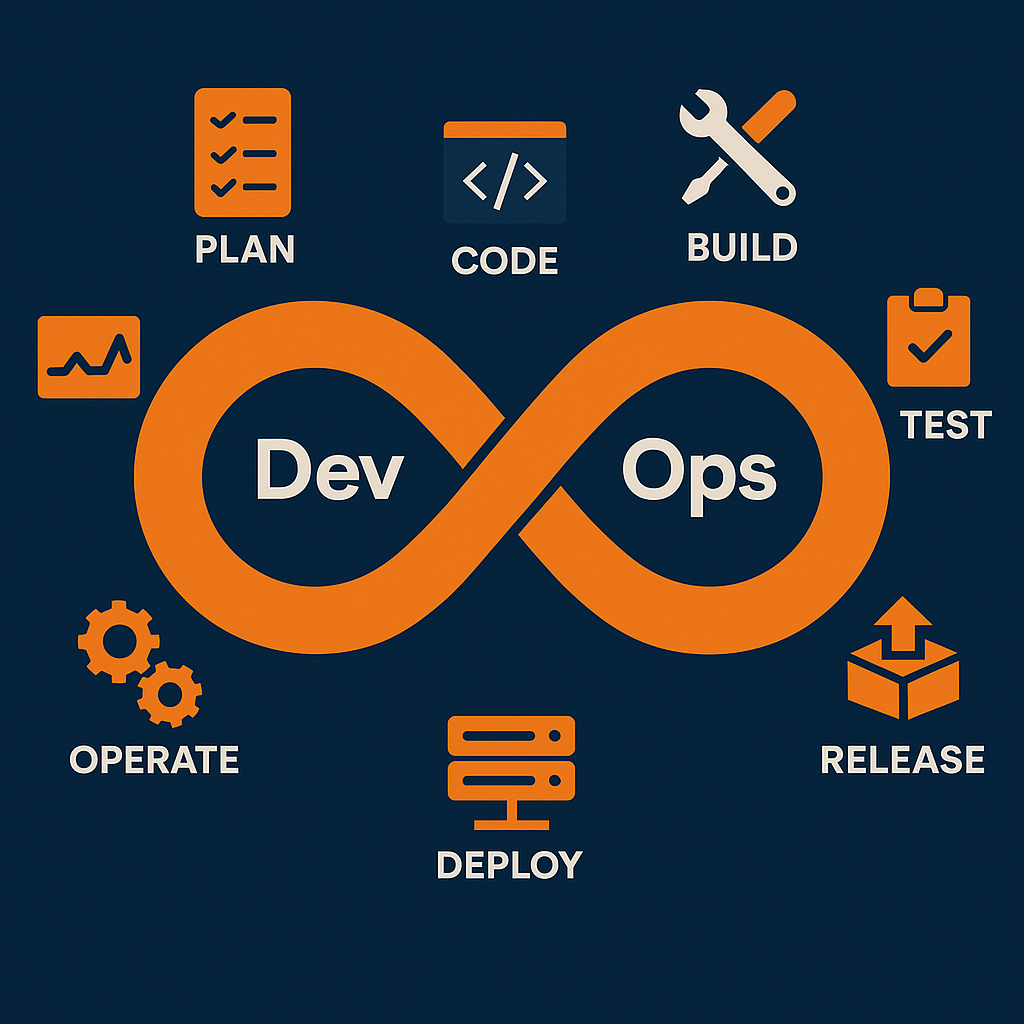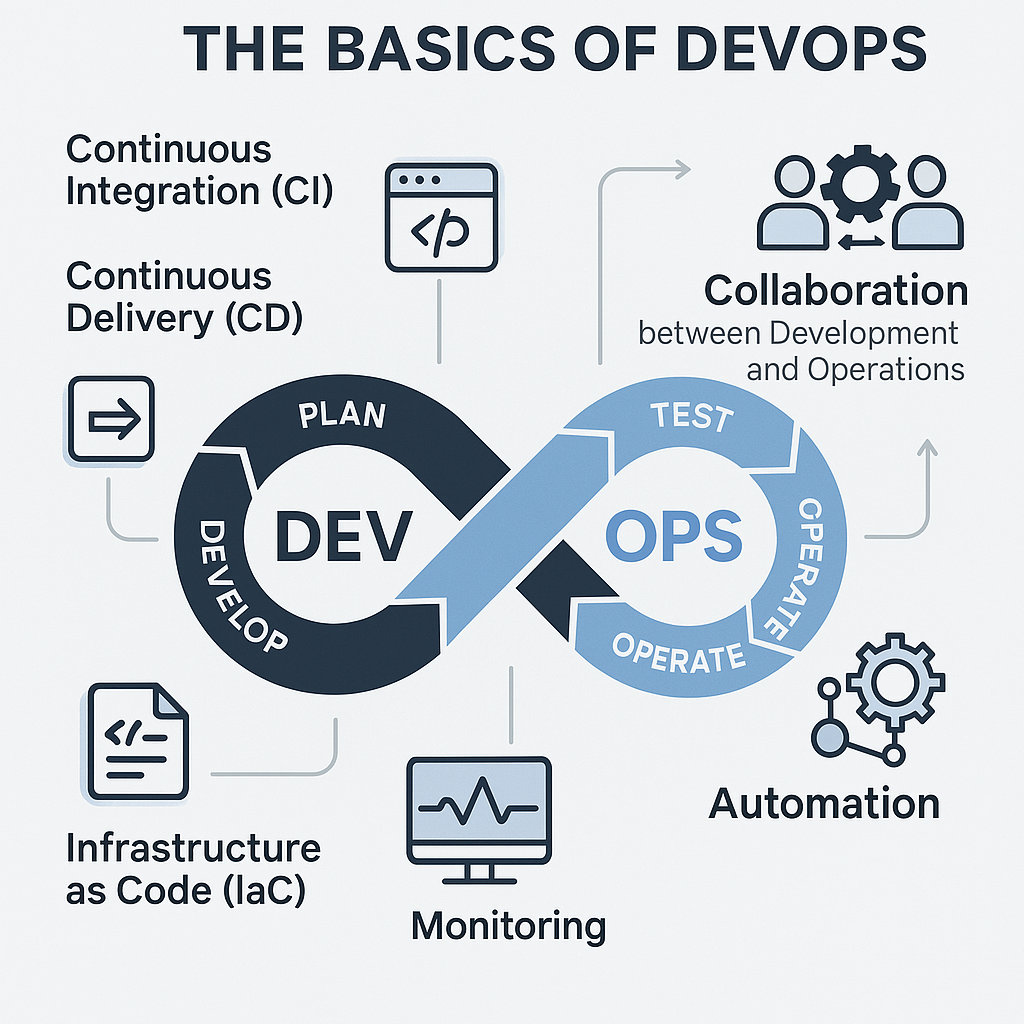Introduction
In our last post, we introduced DevOps and how it’s transforming the way teams build, ship, and run software. Today, let’s dive deeper into the DevOps lifecycle—the backbone of every successful DevOps journey. Whether you’re a developer, tester, or business leader, understanding this lifecycle will help you see how ideas become robust, scalable applications in the real world.
What is the DevOps Lifecycle?
The DevOps lifecycle is a set of interconnected phases that enable teams to deliver software quickly, reliably, and continuously. Unlike traditional “waterfall” models, DevOps creates a continuous feedback loop between development and operations, making it possible to innovate faster and respond to change.
The 7 Key Stages of the DevOps Lifecycle
-
Plan
Define goals, features, and priorities. Teams collaborate using tools like Jira or Azure Boards to break down work into manageable tasks. -
Code
Developers write code, usually in small increments, and store it in version control systems (like Git). Code reviews and collaboration are key here. -
Build
The written code is compiled and built into deployable artifacts. Automation tools (like Jenkins or GitHub Actions) ensure every code change is integrated and built rapidly. -
Test
Automated tests (unit, integration, functional) run to ensure quality. Fast feedback here means bugs are caught early—saving time and money down the line. -
Release
Approved builds are prepared for deployment. This stage includes final checks, documentation, and sometimes manual approvals for production releases. -
Deploy
Code is automatically or manually deployed to staging and production environments. Tools like Kubernetes, Docker, or cloud platforms help streamline and standardize this process. -
Operate & Monitor
The application is live! Operations teams monitor its performance, security, and user experience using tools like Prometheus, Grafana, or ELK Stack. Any issues are detected early, and feedback from users flows back to the planning phase—making it a true loop.
Visualizing the DevOps Lifecycle
Plan → Code → Build → Test → Release → Deploy → Operate & Monitor
↑___________________________________________↓
This cycle repeats continuously, creating a culture of constant improvement and rapid delivery.
Why Does This Matter?
- Faster Delivery: New features reach users sooner.
- Higher Quality: Issues are found and fixed quickly.
- Better Collaboration: Everyone is aligned, reducing friction between teams.
- Continuous Improvement: Real-world feedback is integrated back into planning and development.
Getting Started
Start by mapping your current software process to these stages.
Identify bottlenecks or manual steps that could benefit from automation.
Begin adopting DevOps practices incrementally—small wins add up over time.



Blog comments